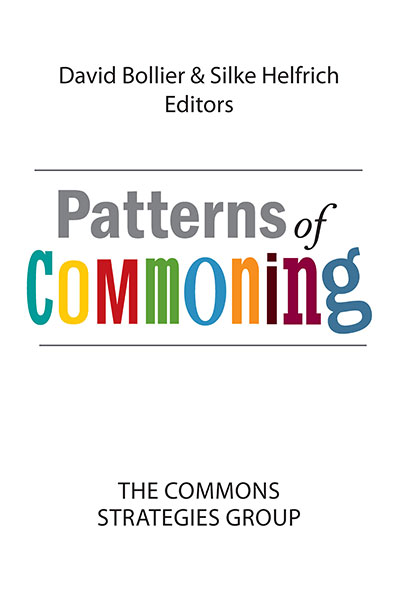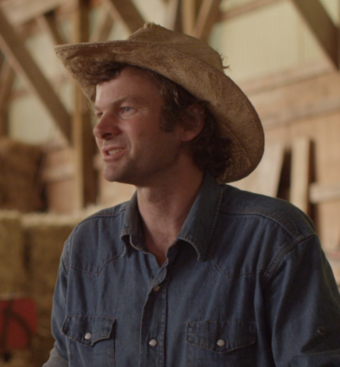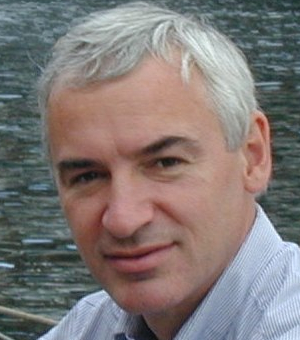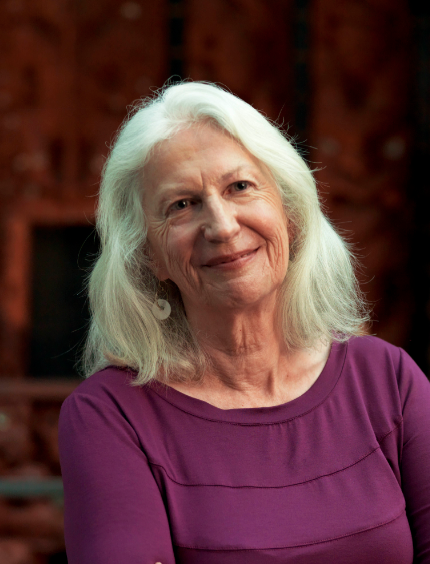Alain Ambrosi (Canada) is a designer and producer of intercultural projects, independent researcher, author, videographer and producer of the Remix The Commons Project.
Patterns of
COMMONING
The Resilience of an Indigenous Ethiopian Commons
By Zelealem Tefera Ashenafi
Ethiopia is home to one of the oldest, most effective conservation management systems in sub-Saharan Africa, the Menz-Guassa Community Conservation Area, an 11,100-hectare region that is home to a rich endowment of grasslands, plants and rare animals such as the Ethiopian wolf, gelada and Abyssinian hare. The history of the indigenous land tenure system known as Atsme Irist 1 reveals a great deal about how people in Menz have been able to regularly use, but also preserve, valuable grazing lands and ecosystem services for more than 400 years.
The varied structures of indigenous land tenure systems in Ethiopia evolved through a complex set of processes, but one of the most notable examples is Atsme Irist. In the Ethiopian district of Menz, which includes the Guassa area, the Atsme Irist system for centuries gave the Menz people a right to claim a share of land held in common with other rightful landholders based on an historical ancestor. According to local sources, the Menz pioneer fathers, Asbo and Gera, started the indigenous management of the Guassa area in the seventeenth century. Gera had noticed an expanse of open land in the eastern part of Menz, Guassa, and demarcated it as his pastureland. Later, Asbo and Gera subdivided the land in two parcels based on the outcome of a horse race; a boundary was drawn at the place where the first horse dropped from fatigue.
The two pioneer fathers set aside the Guassa area for the primary purpose of livestock grazing and use of the guassa (Festuca) grass. Those who could establish kinship with Asbo or Gera through either parent were entitled to claim a share of the land from elders controlling the allocation.
The Qero Indigenous Management System
To promote the rational use of their common property resources in the Guassa area, members of the land holding group there adopted the Qero system. This indigenous institution worked by inviting members of two areas, Asbo and Gera (named after the pioneer fathers), to choose a headman (known as “Abba Qera” or “Afero”) to protect and regulate the use of each area. The Abba Qeras were mostly elected unanimously in the presence of all users of the common property resource. The terms of office of Abba Qera could last from a few years to a lifetime, depending on the performance of the office holder.
Guassa user communities were further subdivided into parishes – six for Asbo and eight for Gera – with one headman esquire for each parish who was answerable to their respective Abba Qera. This division of land under parishes gave the land consecrated status because parishes are under the protective patronage of the long-established Orthodox Christian Church in Ethiopia.
Under the Qero system, the Guassa area could be closed off from any type of community use for as long as three to five consecutive years. The length of closure largely depended upon the growth of the Festuca grass and the need felt by the community. For example, a successful crop harvest might result in a longer closure of the land while a drought might persuade the Abba Qera to reduce the length of a closure.
When the Abba Qera of both Asbo and Gera agreed that the Guassa grass was ready for harvest, they would announce to the rightful owners of the Guassa user community the date of the opening, usually at church ceremonies, market places, burial ceremonies or other public gatherings. The Guassa area was generally opened at the height of the dry season of that particular year, usually in February. Once the grass cutting was over, the livestock took their turn to graze. When the wet season approached, the community prepared to leave. The date of closing was culturally predetermined as July 12 (Hamle Abo), the annual date of the “Apostle’s Fasting Breaking Day,” the second biggest fasting season next to Lent for the Ethiopian Coptic Orthodox Church.
The Qero system imposed a number of rules and bylaws to protect the Guassa area, which were carried out by the entire community working together under the leadership of the two Abba Qeras. The Abba Qeras frequently chose dates to patrol their respective areas, with mandatory participation by every able household head. Failure to participate could result in severe punishment, including, in extreme cases, the burning down of the person’s house.
Women in those times retained ownership rights through their kinship ties to Asbo or Gera and thus the right of their children to inherit land access. However, women were restricted to work around the homestead. If they tried to go out with men to the Guassa area it was regarded as preposterous. Therefore, in those days the Qero system was a male-dominated venture of common property resource management.
Rules prohibiting use of the Guassa area during the closed season could be quite severe. If someone was found cutting or grazing livestock in the Guassa area during the closed season, he or she could be forced to pay 100 sacks of cabbage seeds, a wet lion skin, a one-testicled servant, or other item that is simply not available in Menz or anywhere else! Such penalties were meant to deter people from violating the Guassa bylaws, but could sometimes result in a person being stripped of his Astme Irst right of owning land and be forced to leave Menz permanently. As time went by, the penalties under the Qero system were changed to less severe ones as modern law and rights of individuals became societal norms during the rule of King Haile Selassie. For example, when someone was found cutting grass in the Guassa area, the most frequent punishment for violating a bylaw involved a serious beating. If someone thatched his house using Festuca grass that was cut during the closed season, his house was burned down. If livestock were found grazing, the livestock was slaughtered and the skin would be given to the parish church to make a drum. These types of severe punishment under the Qero system signified how important the common property resource was to the livelihood of the community, its individuals and their communal holdings.
Resilience of the Qero System in the Face of Change
Following the 1974 Socialist Revolution in Ethiopia, the then-governing regime proclaimed the Agrarian Reform in 1975. All land that was in private ownership or communal tenure was transformed into the state or public land tenure system. This in turn brought the Qero system in Menz to a formal end. The transformation of land ownership from communal tenure into the state or public land tenure system abolished the regularity of the Qero system. Suddenly the reliability of resource management that all rightful owners collectively depended upon was no longer fully functional.
State ownership not only instituted different property rights for land usage, it ushered in less sustainable and socially inequitable land use practices because the stewards of the land under the Qero system were replaced by nine farmers’ associations adjacent to the Guassa area. As one informant from a farmers’ association said, “Those people whom we used to exclude from the Guassa management became owners of the Guassa overnight and everybody started to scrabble for the resource.”2 The new state-based management resulted in a more bureaucratic, corrupt and less effective management of the Guassa – in practice, an open access regime.
However, commons tend to have a great capacity to adapt to sudden surprises and shocks – the essence of resilience. That has been the case with the Qero system. After the Qero system was abolished by the state, Menz peasant associations decided to form another indigenous management system, which it called the Guassa Conservation Council Committee, with a new management system and online bylaws, which have adapted to the present sociopolitical order of the country. The new system consists of nine peasant associations (Kebeles) that elect five representatives, each of whom are descendants of Gera and Asbo. The five members of the committee include the chairman of the Kebele, an elder (women or man), a religious leader, a representative of the women and a representative of the youth. For the first time women are included in the management of the Guassa area under the new system. The system governs usage of the Guassa by about 9,000 households.
The Committee oversees a system of twenty “community scouts,” and works with local police to prosecute people who use the Guassa in unauthorized ways. It also upholds the Idir system, a widely respected indigenous social institution that helps members in difficult times. The Qero system punishments are now less severe (100 birr, or about a US$5 fine for cutting grass), but serious offenses such as ploughing grasslands are brought before district courts.
Thanks to a 2012 policy change by the Ethiopian government, the capacity of the Guassa communities to conserve its vital grasslands’ biodiversity was strengthened and recognized by law. The United Nations Development Programme has honored the Guassa community with its prestigious Equator Prize in 2004, and the community conservation practices have been a model for the Frankfurt Zoological Society and other community-based conservation initiatives within Ethiopia.3 In 2013 the Guassa community was awarded the first Mountain Protection Award by the International Mountain Protection Commission (UIAA).4.
Zelealem Tefera Ashenafi (Ethiopia) works as country representative of the Frankfurt Zoological Society in Ethiopia overseeing ecological monitoring, community-based conservation, community-based tourism and rural development activities. He received his PhD from the Durrell Institute of Conservation and Ecology (DICE), University of Kent, UK, and was a project leader with the Ethiopian Wolf Conservation Programme of University of Oxford.
- For more on Atsme Irist in Menz, see Z.T. Ashenafi, “Common Property Resource Management of an Afro-Alpine Habitat Supporting a Population of the Critically Endangered Ethiopian Wolf (Canis Simensis),” PhD thesis, University of Kent, Canterbury, UK.
- Cited in Zelealem Tefera Ashenafi and N. Leader-Williams, “The Resilient Nature of Common Property Resource Management Systems: A Case Study from the Guassa Area of Menz, Ethiopia,” available at https://dlc.dlib.indiana.edu/dlc/bitstream/handle/10535/1953/AshenafiZelealamCPR.pdf?sequence=1
- United Nations Development Programme, 2012. Guassa-Menz Community Conservation Area, Ethiopia. Equator Initiative Case Study Series. New York, NY.
- https://mountainprotection.theuiaa.org/awards/2013#.UyxdZUudTOc



















































